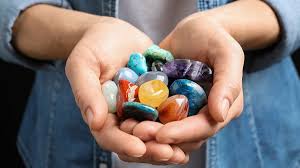Contents
- 1 Introduction
- 2 Unexpected Facts about Rock Tumbling
- 2.1 1. Not All Rocks Are Created Equal (for Tumbling)
- 2.2 2. The Gritty Truth About Grinding
- 2.3 3. Water Plays a Vital Role
- 2.4 4. The Power of Polish
- 2.5 5. A Surprisingly Old Hobby
- 2.6 6. Not Just Pretty Rocks
- 2.7 7. More Than Just Rocks
- 2.8 8. The Science Behind the Shine
- 2.9 9. A Therapeutic Hobby
- 2.10 10. A Sustainable Hobby
- 3 Final Words
Introduction
Rock tumbling, the art of transforming rough stones into smooth, polished gems, might seem like a straightforward process. But this hobby holds a surprising number of twists and turns! So, put down that bucket of rocks and get ready to discover some unexpected facts about rock tumbling that will make you see this activity in a whole new light.
Unexpected Facts about Rock Tumbling

Let’s discuss the facts that are not known about rock tumbling:
1. Not All Rocks Are Created Equal (for Tumbling)
You might think any old rock can be turned into a sparkling gem. Nope! Certain rock types are better suited for tumbling than others. Rocks with a hardness of 6 or higher on Mohs scale (a measure of mineral hardness) are ideal. Quartz crystals, agates, jaspers, and petrified wood are all popular choices because they hold their shape well during the tumbling process and polish beautifully. Softer rocks will crumble or break down under the constant friction.
2. The Gritty Truth About Grinding
The tumbling process doesn’t magically polish rocks. It actually involves a series of grinds using different grits – abrasive materials like silicon carbide or ceramic. Imagine tiny sandpaper particles slowly smoothing out the rough edges of your rocks! The grit size starts coarse (think chunky sandpaper), gradually progressing to finer grits (like the smoothest sandpaper you can find). Each grit stage removes scratches and imperfections, leaving your rocks progressively smoother.
3. Water Plays a Vital Role
Water isn’t just there to fill up the tumbler. It acts as a lubricant, reducing friction between the rocks and the grit, preventing them from getting too hot and potentially cracking. It also helps carry away the debris created during the grinding process. The right amount of water is crucial – too little can burn your rocks, while too much can slow down the process.
4. The Power of Polish
Once your rocks are nicely rounded and free of scratches, it’s time for the finishing touch – polish! This is a finer abrasive mixed with a lubricant that gives your rocks that final shine. Depending on the desired finish, different polishes can be used – some create a high gloss, while others leave a more matte appearance.
5. A Surprisingly Old Hobby
Rock tumbling isn’t a new invention! Evidence suggests that ancient civilizations like the Egyptians and Romans used rudimentary tumbling techniques to polish stones for jewelry and decorative purposes. Early methods likely involved tumbling rocks in animal skins or leather pouches with abrasive materials like sand or even crushed pottery.
Read This- Rock Tumbler User Guide – Preparation/Setup Step
6. Not Just Pretty Rocks
Rock tumbling isn’t just about creating beautiful gemstones. It’s also used in industrial applications to smooth and polish metal parts, deburr (remove sharp edges) machined components, and even clean and polish gemstones mined commercially. The basic principles of tumbling – using abrasion and friction to achieve a desired finish – can be applied to various materials.
7. More Than Just Rocks
While rocks are the most common material used in tumbling, it doesn’t stop there! Seashells, glass pieces, and even bone can be tumbled to create unique and interesting polished objects. Just remember to choose materials with similar hardness levels to avoid breakage during the process.
8. The Science Behind the Shine
The smooth, polished finish of a tumbled rock isn’t just about aesthetics. It’s a result of the physical and chemical processes happening during tumbling. The constant grinding breaks away tiny pieces of the rock’s surface, gradually exposing smoother and harder layers underneath. Additionally, some polishing agents might react chemically with the rock’s surface, enhancing the shine.
9. A Therapeutic Hobby
Rock tumbling isn’t just fun, it can also be therapeutic! The repetitive nature of the process can be calming and meditative, allowing you to focus on the present moment. Seeing the transformation of a rough rock into a beautiful gem can be incredibly rewarding. Plus, it’s a great way to connect with nature and appreciate the beauty of geology.
10. A Sustainable Hobby
Rock tumbling allows you to appreciate and collect stones without harming the environment. You can ethically source rocks from local streams, beaches, or rockhounding sites. Instead of buying mass-produced gemstones, you create your own unique collection of polished treasures.
Final Words
So, the next time you pick up a rough rock, remember the fascinating journey it could take! Rock tumbling is an activity brimming with unexpected facts and hidden depths. It’s a gateway to geology, a stress-relieving pastime, and a sustainable way to create beautiful objects. Whether you’re a seasoned rockhound or a curious newcomer, there’s always something new to learn and discover in the world of rock tumbling. So, grab a bucket of rocks, unleash your creativity, and get ready to be surprisedsharemore_vert
.

